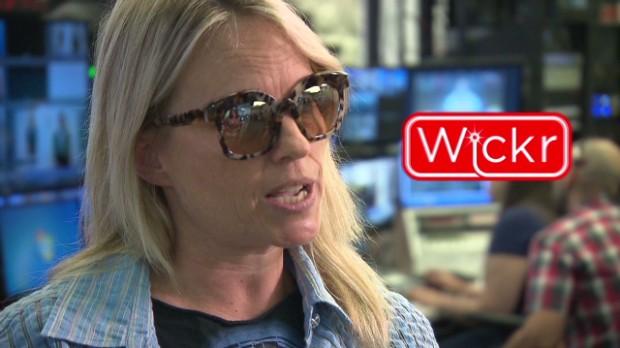Kids born in 1946 — the beginning of the baby boom generation — gathered around their TV sets to watch the Mickey Mouse Club, Leave it to Beaver and Howdy Doody. The kids born at the tail end of the boom, in 1964, tuned into Scooby Doo, Super Friends and Little House on the Prairie.
Early and late boomers have widely varied cultural perspectives and life experience — so advisors lump them together at their peril, the Insured Retirement Institute warns.
While their differences are not as pronounced as the gap between boomers and millennials, younger boomers will likely face additional challenges, according to an IRI report released Monday.
Overall, just 34% of boomers said they were confident in their ability to retire comfortably, the report found. However, older boomers, those between ages 61 and 66, were more confident, with 42% saying they could retire comfortably. Just 25% of boomers between ages 50 and 55 agreed.
It doesn’t hurt that early boomers are more likely to have retired already, making retirement a reality instead of a vague unknown.
“From a retirement planning perspective, we need to start segmenting the boomer cohort to ensure that we are appropriately addressing their unique retirement needs and challenges,” Cathy Weatherford, IRI president and CEO, said in a statement. “Those on the back end of the generation have had a much different workplace experience than the first boomers.”
Weatherford noted that unlike many early boomers who likely have pension plans, younger boomers were more likely to spend most of their careers in the defined contribution plan era and “will face many of the risks and challenges that have come with it. As a result they will be more self-responsible for their retirement income security. At the same time, late boomers have less saved for retirement and their low confidence regarding their future financial security reflects this.”
Furthermore, early boomers worked through long spells of economic stability, giving them a leg up on retirement security, according to the report. Indeed, the Pew Charitable Trust found in May that early boomers may be the last generational cohort to retire well.
Almost a third of early boomers say they have less than $100,000 saved for retirement, but nearly half of late boomers said they have less than that saved, IRI found. Just over a quarter of late boomers said they are doing a good job preparing for retirement, compared with 45% of early boomers.
Late boomers are also more likely to struggle with day-to-day expenses or support adult children financially. Almost a third said they were having trouble paying their mortgage or rent, compared with 20% of early boomers. Thirty-four percent of younger boomers say they are providing financial support for adult children, compared with 21% of older boomers.
Social Security is another challenge weighing unevenly on late boomers. Over half of early boomers expect Social Security to be a major source of income in retirement, compared with just 36% of late boomers.
Despite all these challenges, 41% of late boomers expect their financial situation will improve over the next five years, compared with 25% of early boomers. IRI theorized that this is likely because they still have a few years left in the work force. “Part of the explanation of this greater optimism among late boomers could be more late boomers are working with at least 12 more years until full Social Security eligibility for the oldest in this cohort, the 55-year-olds. More working years provides more opportunity to improve upon current financial challenges,” according to the report. Furthermore, according to the Bureau of Labor Statistics, unemployment for people between 50 and 54 was under 6% in May, down from 7.2% in 2009.
---
Check out Early Boomers May Be Last Generation on Track to Retire Well on AdvisorOne.
 Brian Bolan is a Stock Strategist for Zacks.com. He is the Editor in charge of the Zacks Home Run Investor service, a Buy and Hold service where he recommends the stocks in the portfolio.Brian is also the editor of Breakout Growth Trader a trading service that focuses on small cap stocks and also carries a risk limiting strategy. Subscribers get daily emails along with buy, and sell alerts.Follow Brian Bolan on twitter at @BBolan1Like Brian Bolan on Facebook
Brian Bolan is a Stock Strategist for Zacks.com. He is the Editor in charge of the Zacks Home Run Investor service, a Buy and Hold service where he recommends the stocks in the portfolio.Brian is also the editor of Breakout Growth Trader a trading service that focuses on small cap stocks and also carries a risk limiting strategy. Subscribers get daily emails along with buy, and sell alerts.Follow Brian Bolan on twitter at @BBolan1Like Brian Bolan on Facebook

 Khakis are back! Gap up on strong sales
Khakis are back! Gap up on strong sales  The Internet is increasingly becoming a larger part of the average Russian's daily life. Based on the prevailing user growth trend, both Internet usage and frequency should increase.
The Internet is increasingly becoming a larger part of the average Russian's daily life. Based on the prevailing user growth trend, both Internet usage and frequency should increase. 

 Hacker makes encrypted message app NEW YORK (CNNMoney) In the post-Snowden world, encryption is cool. Lots of personal messaging apps want to cash in on privacy.
Hacker makes encrypted message app NEW YORK (CNNMoney) In the post-Snowden world, encryption is cool. Lots of personal messaging apps want to cash in on privacy.